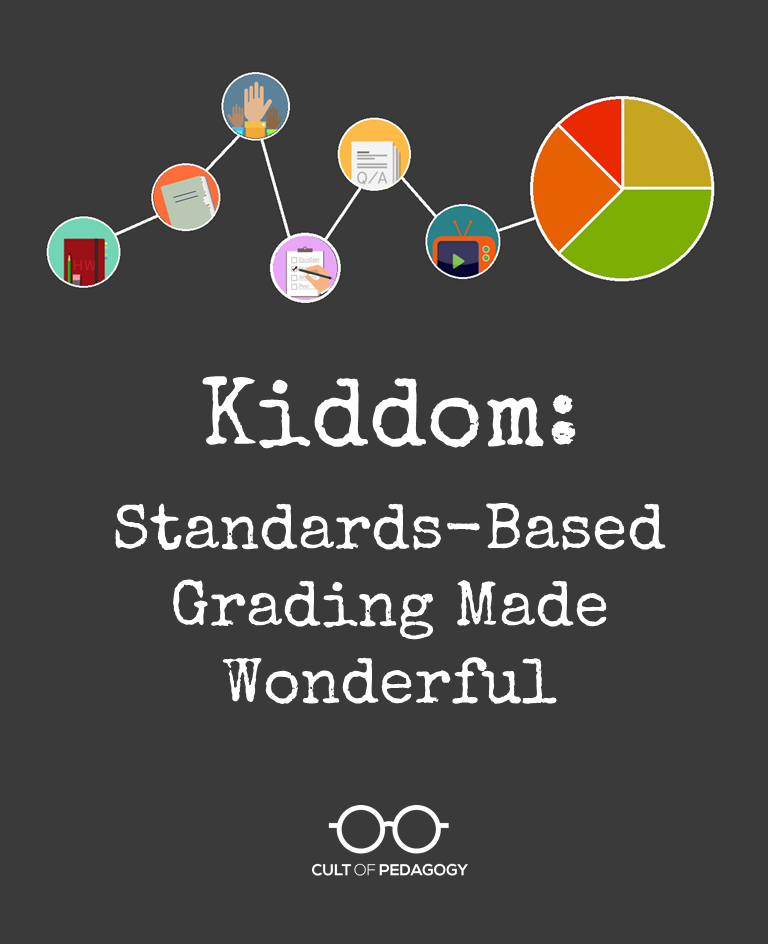
This is a sponsored post. All opinions are my own.
The growing popularity of standards-based grading and instruction is a good thing: Instead of a single grade representing how much work our students did, standards-based assessment gives us a detailed picture of what they learned.
The only problem is, doing standards-based grading right can be incredibly time-consuming. If you’re trying to help a lot of students master a lot of standards, monitoring which students need help on which standards can quickly overwhelm you. Ideally, you’d have a program that keeps track of every standard measured by every assignment, then crunches the numbers over time so you can adjust your instruction accordingly.
That’s where Kiddom comes in.
Kiddom is a free platform that allows you to track student assignments along with the standards they assess for, then access a range of data reports that tell you which standards need more work, which students need more help, and where exactly you need to put your energy.
How it Works
As the teacher, I start by setting up an assignment. Kiddom gives me lots of options to choose from, including exit tickets, homework assignments, papers, tests, and projects. The assignment can be a lesson I already use in my classroom, or I can choose something from Kiddom’s large library of interactive, standards-aligned lessons from sources like Khan Academy, CK-12, and IXL. That means less time preparing materials and a greater ability to differentiate instruction.
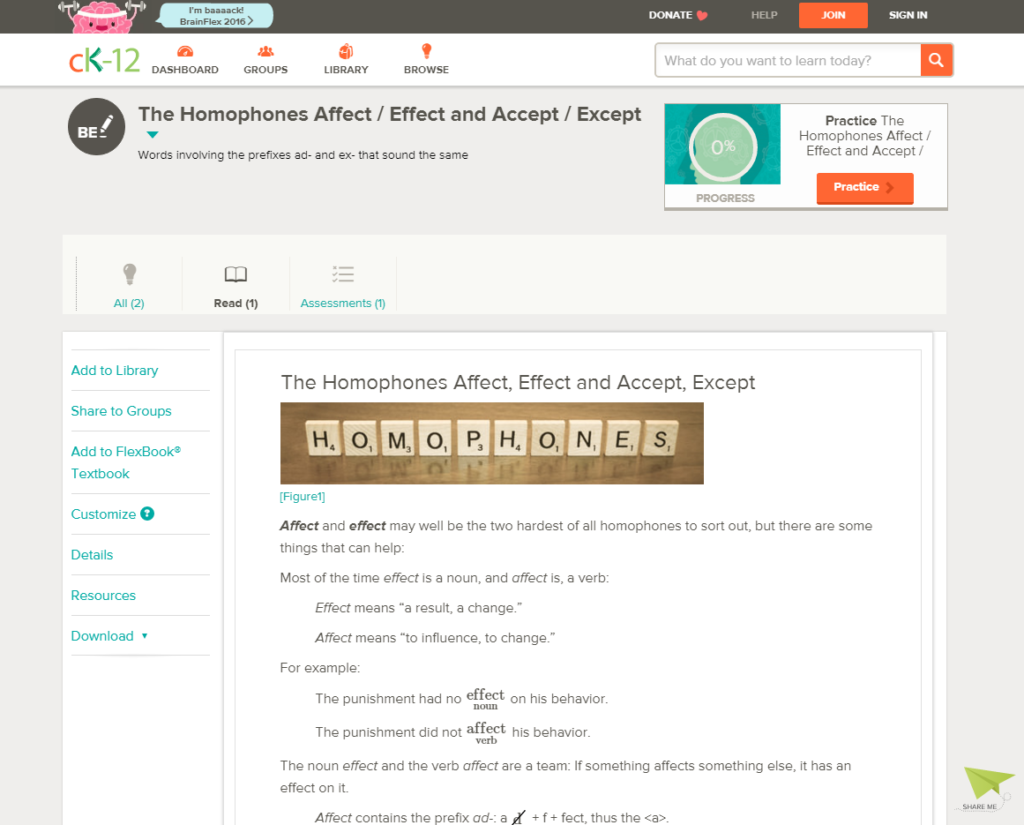
This lesson on homophones is just one of many available in Kiddom’s free content library.
Next, I choose the standards I want to align with the assignment. I can grade the assignment with points or a rubric. If I choose a rubric, I can create as many assessment categories as I’d like—to grade for different criteria—and define the qualities of each level of performance. Then I can align that category with a specific standard. Once I have created a rubric category, Kiddom saves it so I can re-use it for other assignments.
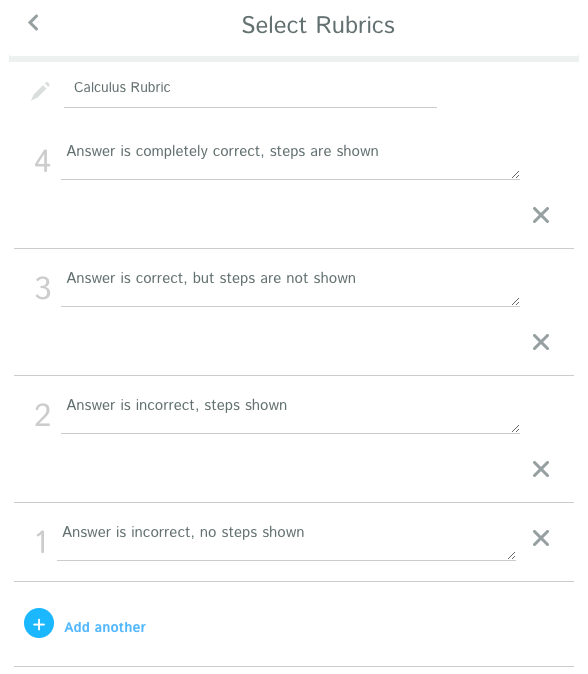
I can save my custom rubrics for later use with other assignments.
Students submit their assignments—either on paper or through Google Drive (more on this below)—and I enter their grades. If I want, I can send comments to students right inside Kiddom, and they can reply back to me:
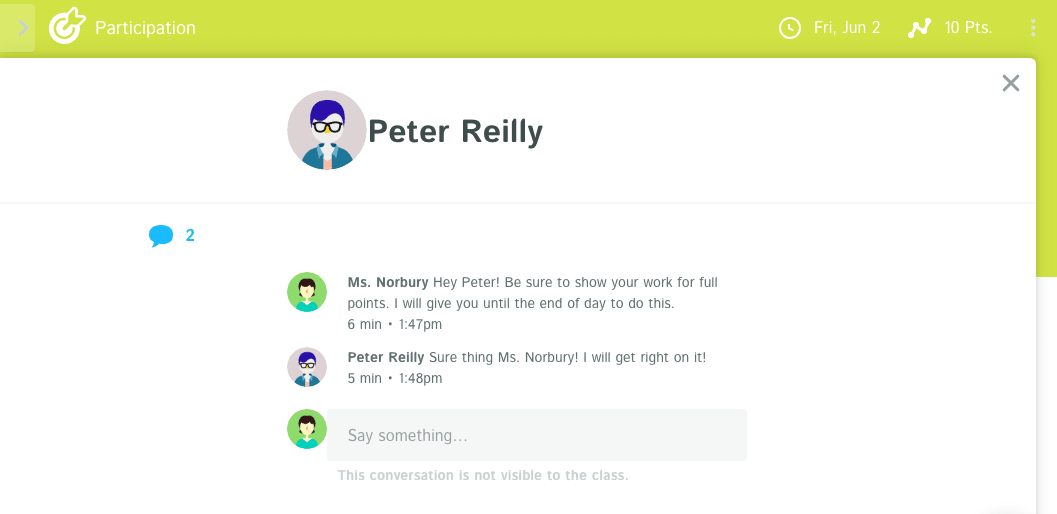
When grades have been entered, I can look at a Class Mastery overview that summarizes student progress on all standards. This overview includes all assignments that have been done up to that point:
Click to view larger image.
Every time a new assignment is graded, this page will change, giving me a real-time look at exactly where my class is as a whole, where each student is in terms of overall mastery, and to what extent each standard is being mastered, which is shown in the bottom half of the above chart. If I click on any of those standards, a pop-up window will appear that shows me exactly where each student is in terms of mastering that standard, allowing me to group students according to their need for remediation or enrichment:
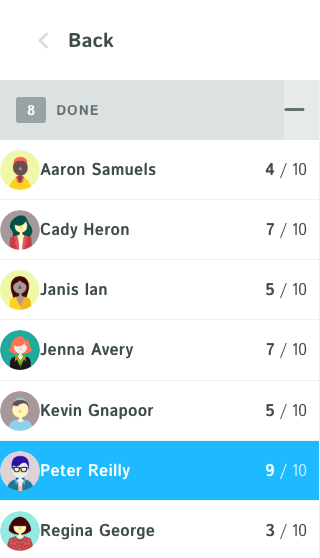
Plenty of Standards to Choose From
Kiddom allows teachers to select from a long list of standards with which to align student work. This includes, but is not limited to, the Common Core State Standards, Next Generation Science Standards, and a growing list of standards specific to over 15 states, including Texas, New York, California, and Arizona. These are all fully integrated into the system, so choosing the right one for each assignment is as simple as clicking a button. For a full list of available standards, click here.
And the standards go beyond academics: Also integrated are CASEL’s Social and Emotional Learning Core Competencies, so teachers can track these skills as part of a student’s overall growth profile.
On top of all this, teachers can also create or upload their own custom standards, which is ideal for meeting school-specific initiatives or aligning goals with IEPs.
Easy Reporting
Not only does Kiddom make it easier to view student data in all kinds of configurations, there’s also the option to produce a PDF report card for each student that summarizes all their work for a grading period. With a single click, these can be created to summarize student progress based on standards (left) or assignments (right). These reports can be shared with students, their parents, and support staff.
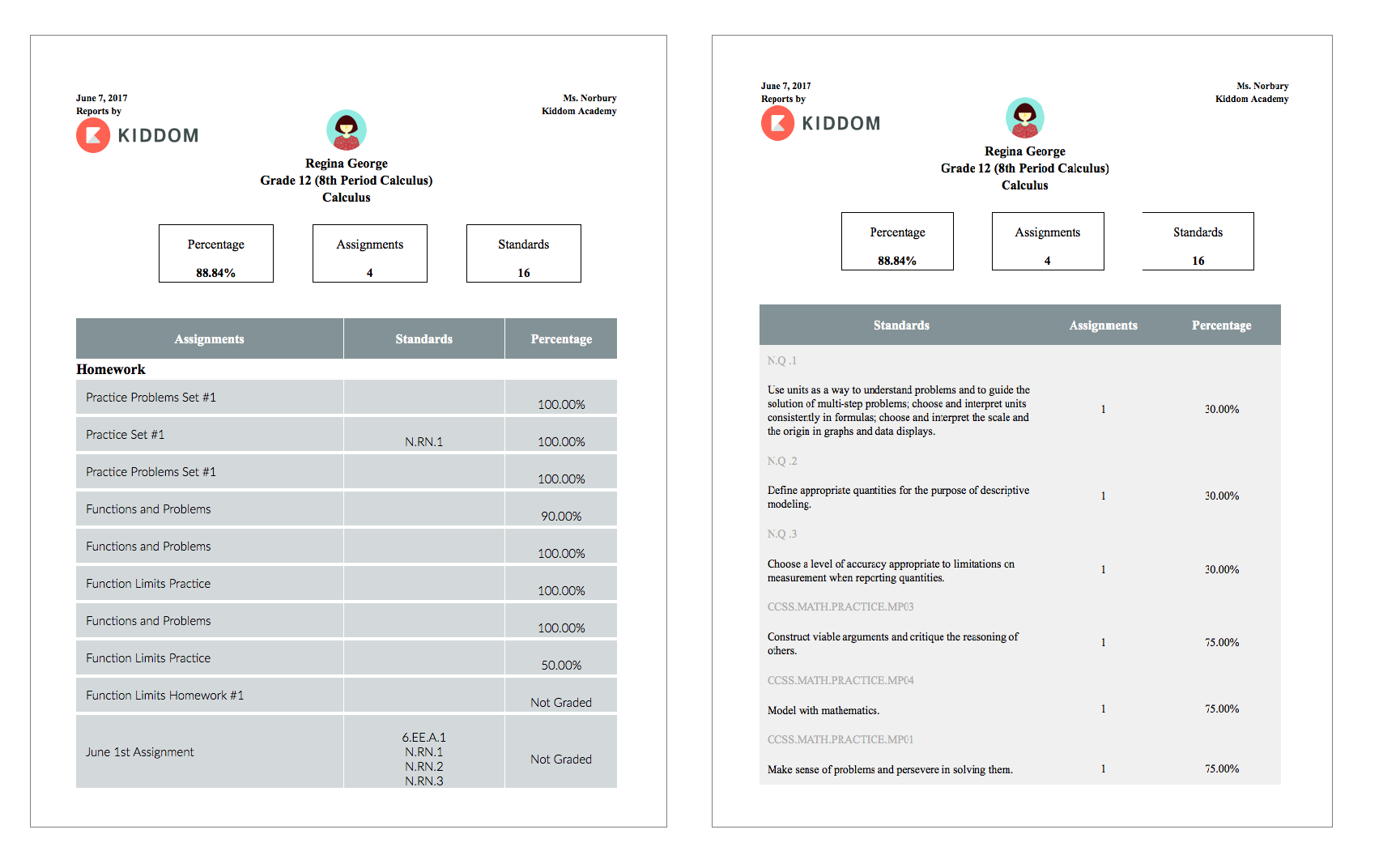
Click to view larger image.
Google Drive Integration
If you and your students are working in Google Drive, you are going to love this feature: When you create an assignment, you can link it to a file in your Google Drive. This might look like an essay prompt, a science lab report form, or an open-response question. Once the file has been linked, Kiddom automatically creates a brand-new copy of that file for each student, puts it into that student’s Drive, and gives you access to that file in a folder on your Drive. That way, you can easily go into each student file to grade it AND make changes to certain students’ assignments for differentiation purposes.
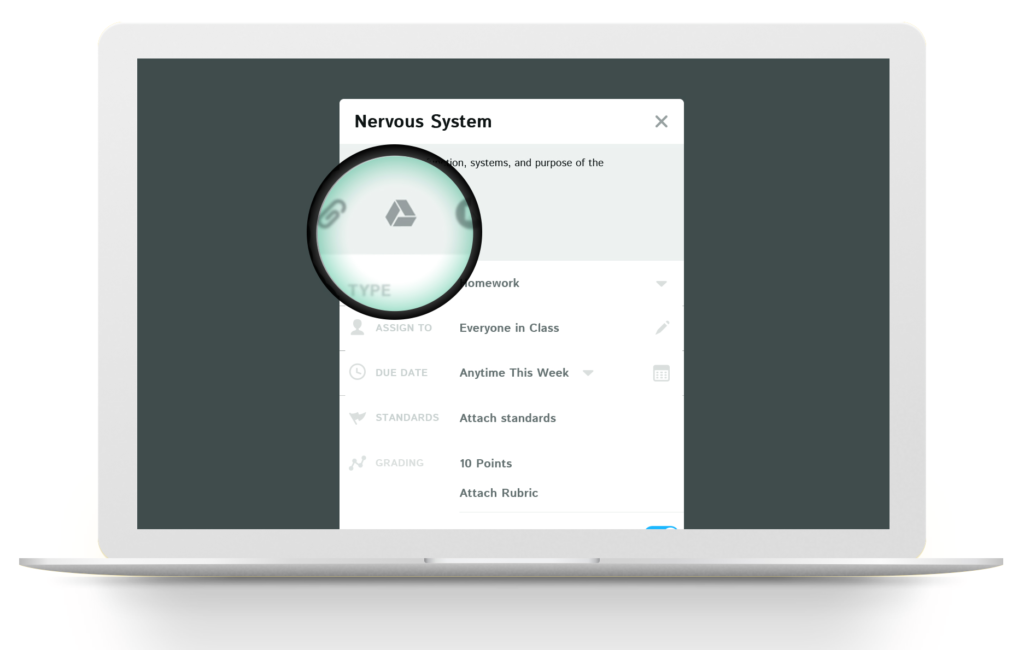
Standards-Based Grading from Your Phone
Kiddom also offers a free iOS app that allows you to perform about 90 percent of the platform’s web-based functions, so you can get your planning and grading done on the go.
Coming Soon: Gradebook Integration
The Kiddom team—many of whom are former or future educators—is hard at work making Kiddom an even more robust platform for supporting data-informed instruction. At the moment, teachers who use Kiddom still have to manually enter grades into their school’s grading program separately, but Kiddom is developing integrations with popular grading programs Edmodo, Schoology, Engrade, and PowerSchool, which will ultimately allow teachers to enter a grade once and have it populate in both Kiddom and their grading software.
So if you’re fully on board with the philosophy behind standards-based grading, but managing all that data has given you second thoughts, things are about to get a whole lot better for you. Kiddom’s free tools will take what was once a pile of numbers and turn it into the kind of focused, impactful work standards-based instruction is supposed to be…some might even say wonderful. ♦
Update September 13, 2016: Kiddom is growing! They have now published a free Guide to Standards Based Grading and a free Guide to Social Emotional Learning. Check them out!
Other Updates: Kiddom 2.0 provides educators with a centralized platform to access a variety of dimensions about student performance. 50+ features have been added to the new Kiddom 2.0. Highlights include:
- New Planner: ability to design personalized curriculum, to stay in sync with student needs.
- Better Reports: beautiful analytics to understand student performance.
- More Customization: teachers can customize content, grading and analytics according to their classrooms
- Beautiful Design: a major redesign focused on functionality and usability, developed with educator feedback.
- Teacher Collaboration: teachers can now collaborate right on the Kiddom platform. Learn more here.
Join my mailing list and get weekly tips, tools, and inspiration—in quick, bite-sized packages—all geared toward making your teaching more effective and fun. You’ll also get access to my members-only library of free downloadable resources, including my e-booklet, 20 Ways to Cut Your Grading Time in Half, which has helped thousands of teachers spend less time grading!





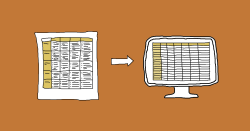
Thanks for the thorough review. Looks like a great platform for assessment. I’ll definitely give it a go!
Keith, I’m glad to hear it! The whole Kiddom staff is really committed to listening to teacher feedback, so be sure to get on their help chat if you have any questions or suggestions! I would love to hear how it goes for you.
Hi Keith —
Jenn is right, we’re super committed 🙂
Happy to connect with you directly if you need help setting up or just a quick demo.
Regards,
– Abbas
Do you know if this is integrated with Google Classroom? I’ve used Classroom extensively this year, and with some reservations/wish lists, I’m happy with it. I need to look at this, too, though, because it sounds good.
HI Sinead, My name is Liz and I work at Kiddom
To answer your question in many ways, we amplify Google Classroom.
Just to give you a more detailed explanation of what you can do with our platform:
1. A robust gradebook. Any assignment you assign to your class, you can add this assignment into Kiddom’s gradebook. When you grade the assignment, your mastery reports will automatically update to give you the info and analytics you need to assess class performance, individual student needs, and content to spiral back in, etc. If your students made Kiddom student accounts, they’ll receive a notification every time you add an assignment, grade an assignment, or make a comment on one of their assignments. This helps keep students informed, and accountable.
2. You may also use Kiddom as an assignment sharing platform. Our Google Drive integration allows you to send and share Google Drive docs directly with your students (be careful: this works best if your students sign up with Gmail accounts). Kiddom’s Google Drive integration creates a unique “copy” of your Google Drive document foreach student, providing them with their own copy. You may access these documents via your assignment menu or directly from your Google Drive.
We’ve been getting a lot of questions like these lately! So we decided to make a page for it. Hope this helps!
http://www.kiddom.co/google-classroom/alternative
Are these the new oklahoma math and ela standards? Also, is there a report for a curriculum director, principal or superintendent to view mastery, near mastery or at risk of multiple classes at once?
Hi Denise — we’ll work on incorporating those. If you sign up and chat us with this request, we can even setup an alert to tag you once those standards go live. In addition, we are currently in the process of building an administrator side to this for school-wide adoption. Check that out here: http://www.kiddom.co/academy
Hi Denise,
My Name is Liz and I work at Kiddom. We are using the the ELA and math standards from the Oklahoma State Department of Education. If there are new standards available please let me know and we can work on getting them into the system.
As for your question about reports for admin, we are working on building Academy. Academy is a full school version of Kiddom. You can find out more here. http://www.kiddom.co/academy
Liz
Liz@kiddom.co
I am looking for a grading system with rubrics for my special needs students who are a part of our inclusion standards-based classrooms, receive SPED RTI2 (response to intervention-remediation) skills-based services. These students are often three to four grade levels below but do not qualify for comprehensive development classes. I am looking for a way to help my teachers teach these students the same standard but at their ability level. Additionally, I am searching for a clear way to grade these students on the standards taught to them on their ability levels with accommodations and modifications. We need a clear way to show these modified grades on progress reports and report cards, so parents can clearly see the students’ grades are modified versions of the general education grading scale.
Lisa, what I like about Kiddom is that for any assignment you set up, you choose which students it goes to, so it works really well for creating modified assignments for different students. I’m not sure how you would communicate modifications on report cards…this might be a good question for the folks at Kiddom. They are replying to comments here, so keep an eye on your question to see what they have to say about progress reports.
As far as finding different ways to teach the same standards, Kiddom doesn’t make any suggestions for that. I would recommend you take a look at an earlier post I did about the Can-Do Descriptors — this is a set of documents designed for modifying instruction for ELL students, but it would work well for modifiynig assignments based on ability as well.
I am going to be really excited with this if the Arizona State SOcial Studies Standards were more complete and able to be used in this format. Love this platform and am waiting to implement this in my social studies classes.
I see there is a Google Docs integration. Is there an Office 365 integration, by any chance?
Hi Danielle — not yet.
Would love to learn more about how you’d utilize this type a 365 integration. Does your school mandate Office 365 over Google?
Please reach out to us directly by e-mailing: support@kiddom.co
This reads wonderful! Thanks for sharing such a great tool.
Every time I try to access the Arizona 8th grade Social Studies curriculum under the add assignment tab I get this message
Your search (8th Grade, Social Studies) did not return any results. Please change your search and try again.
Hey Keith! When you go into Kiddom, they have an excellent live chat feature to help you in any situation like that, and there are customer service folks there to answer questions like these. Look in the bottom right corner for the gray icon with the question mark.
Thanks appreciate the direction. also, love the site.
Hi Keith — thanks for the note. We’re looking forward to giving you a complete demo. Speak soon!
I’m really interested in this platform, do you know if they have any, interest in extending beyond the US standards mentioned? I’m in Australia.
Hi Michele — We do have plans to expand!
Is there a specific Australian standard set you’re using? Also, we do allow teachers to add and track their our own standards. Here’s a short tutorial on how to do so via Class Settings:
https://www.youtube.com/watch?v=LcmgJfkne3g&index=4&list=PLKBfT95-O843T2WqHbcBeOP9nCM8JXRVc
In addition, we’re happy to provide you with a one-on-one demo: http://www.kiddom.co/demo
Hi Jennifer,
I’d be interesting in knowing your opinion on Chalkup. It’s streamline and easy to use. It doesn’t have a great deal of features, but maybe that’s a good thing. Anyway, I’ll start a class on Kiddom for May as a test for next year just to dig a little deeper. Thanks for your work!
I’ve looked through this post quickly and am bookmarking it so I can read it thoroughly. Better standard grading next year is my focus for my “summer learning”-I want to improve this! 4th grade…think this will work well?
Yes. Absolutely!
Hi, This looks really interesting. My question is how functional is this for the elementary level. I’ve tried a few other standards based gradebooks and they haven’t really worked out well for me.
Hi Christine. My name is Abbas and I work at Kiddom. Our biggest user group right now is at the elementary level. I encourage you to book a demo with one of us to get your questions answered. We seriously would love to help in any capacity we can – http://www.kiddom.co/demo
Hello. I’m a teacher in NZ and am interested in utilising Kiddom. We are Microsoft Office 365 based and obviously the standards assessed against are US standards.
Are we able to use Kiddom?
Hi Lianne — yes, of course. I’d recommend you book a free 30 min demo via video conference or phone with our Teaching and Learning team. Go here: http://www.kiddom.co/demo
In terms of reporting (specifically report cards, but any kind of reporting), will Kiddom allow student data to be pulled from a building level. Or to put it another way, can you generate a report that will pull data for a student if they have assignments/grade books from multiple teachers. I work at a middle school and without a building level integration, we’d never be able to coordinate report cards for 600 students.
Thanks.
Hey, Aaron! I’m a Customer Experience Manager with Cult of Pedagogy. We’ll let somebody from Kiddom know that you have this question.
Hi Aaron! My name is Abbas and I’m Chief Academic Officer at Kiddom. That’s a great question and the short answer is yes, but this will only available to our pilot schools, which are rolling out our school-wide solution this school year. Our team is happy to explain more, simply book a demo (for school administrators) at a time most convenient for you: http://www.kiddom.co/demo
Hi,
I realize this is a somewhat old post, especially since it refers to a piece of software that has probably had a dozen updates with the original post, but I read through your review, and tinkered for about 25 minutes with a free Kiddom account. In the end, I was dismayed that the grade processing that seems to be happening in the background is still a traditional setup and not really Standards-Based Grading.
While it’s true that Kiddom allows for assignments to be aligned with learning standards and connected to rubrics for grading, in the end each assignment gets a certain number of points and these points are the basis of an overall grade.
Standards-Based Grading isn’t just about using rubrics to assess work. The approach includes a rejection of points-based grading as carrying with it all sorts of issues that have gone largely undetected and run antithetically to the mastery-based focus of SBG. The problems with a points-based system for overall grades are numerous and have been well documented if you care to look.
In any case, a back-end reliance on computing overall grades fundamentally as dividing points earned by points possible is a non-starter for me. I want the rubric-based feedback, uncoupled from the 0-100 scale grades. There are other ways to get an overall grade then merely division, and I can’t see how to change settings in Kiddom open these options up for me.
I meant to add that I’ve browsed briefly through the other posts in Cult of Pedagogy, and I really do like what I see – a quick perusal uncovered a couple ideas new to me and I’ll be back to look for more over time.
Thanks 🙂
Hey Dylan,
This is a good question, and I appreciate you bringing this up. I will let Abbas Manjee, the Chief Academic Officer at Kiddom, address your question, as he certainly knows more about their capabilities and can tell you whether you can get the features you’re looking for without the ones you don’t want.
p.s. I’m glad you found other things you like on the site!
Hi Dylan,
I sincerely appreciate your willingness to roll your sleeves up and dive into Kiddom to explore how it could work for you. Teacher feedback like this has and always will be invaluable to us. To your points:
Regarding how Kiddom calculates grades, you’re right. Each assignment gets a certain number of points and those points are indeed the basis for an overall grade (you can read more about our math here: http://support.kiddom.co/the-kiddom-platform/account-and-class-settings/how-are-grades-calculated).
You said, “The approach [SBG] includes a rejection of points-based grading as carrying with it all sorts of issues that have gone largely undetected and run antithetically to the mastery-based focus of SBG.” Disagree – SBG is a system of assessment and reporting that describes student progress in relation to standards/skills. SBG is largely about building in the affordances for students to move on once they’ve demonstrated mastery. Teachers and schools are often left to their own devices in terms of how to calculate “mastery” (the practice does not prescribe a specific grading methodology).
You also said, “The problems with a points-based system for overall grades are numerous and have been well documented if you care to look.” Yes, but not all teachers and schools have the luxury to drop points from the equation. Some teachers are actually mandated to use the 0-100 scale. As an education technology company, we’re not in the position to tell teachers or schools HOW they should calculate grades. We build technology to support teacher and school needs, that’s it… which brings me to this: how do YOU use rubric-based feedback in your classroom? How do use your students’ individual assessment scores to determine an “overall” grade? We love learning from our educator community.
P.S. You said, “I want the rubric-based feedback, uncoupled from the 0-100 scale grades.” Have you tried using the “max value” grading methodology in Kiddom (from class settings)? With max value, grades are not calculated using what you said, “dividing points earned by points possible.” With max value, mastery is determined by the highest mark achieved on a particular standard. So if a student earns an “approaching mastery” five times on a skill, but later demonstrates “mastery,” the grade for that standard automatically updates to “mastery.”
Hi there,
Future teacher here, working towards my degree in education currently. I’m looking into innovative ways to track student data and this looks like one, is it something that is user friendly for a novice teacher?
Hey Alexis — certainly. Take a look at learn.kiddom.co as a user friendly resource to get started.
Major update and news from Kiddom: https://www.edsurge.com/news/2019-11-01-open-up-resources-takes-a-digital-leap-through-kiddom-partnership